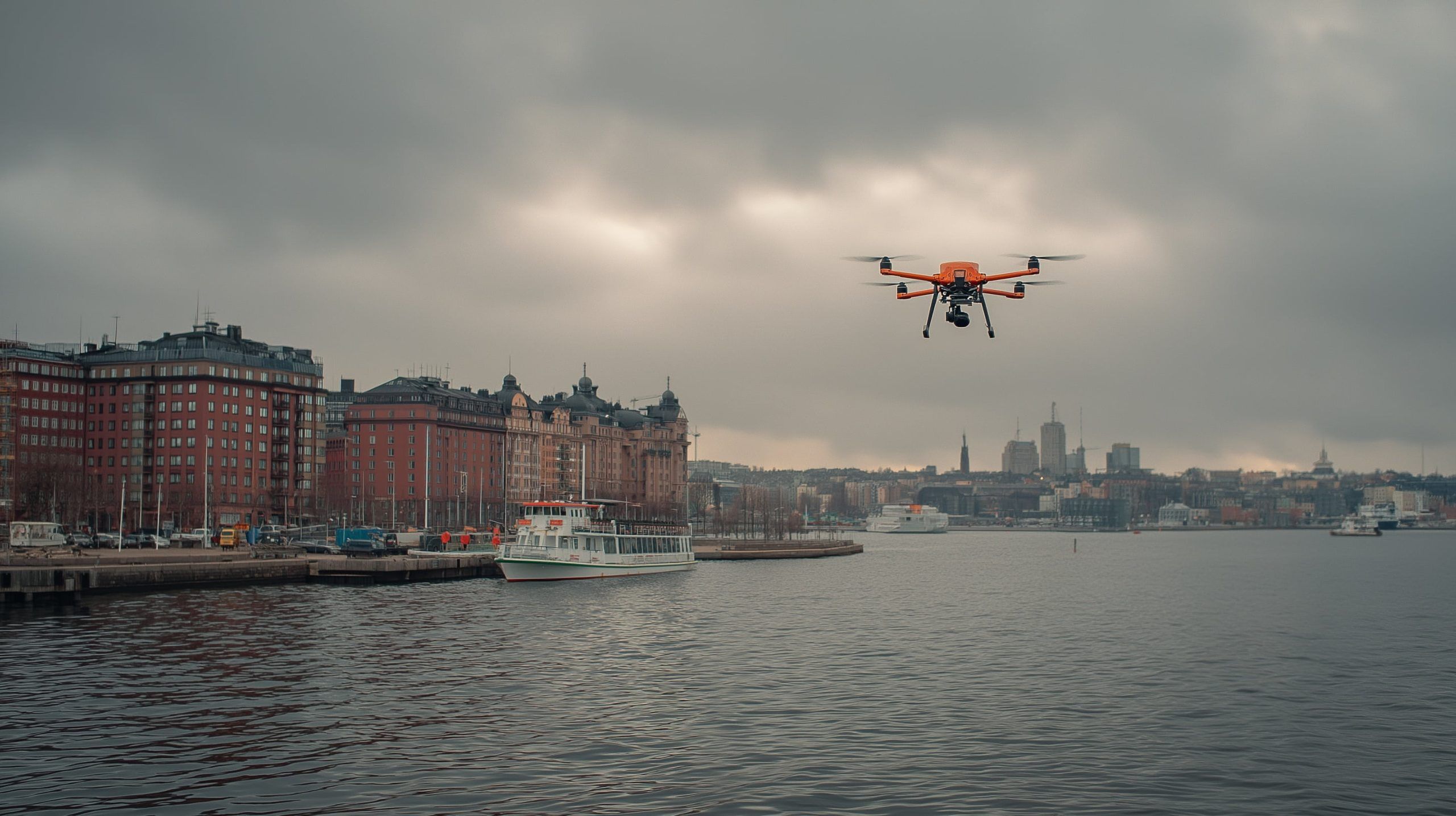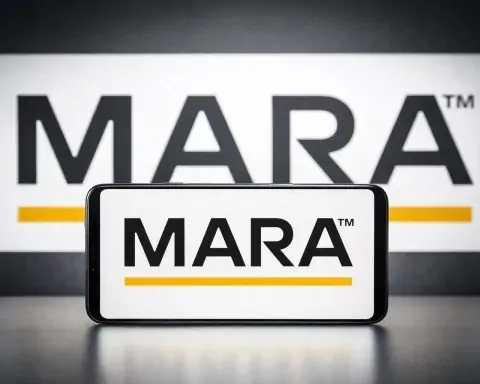- Stockholm follows the EU Open, Specific and Certified drone categories, adopted by Sweden on January 1, 2021.
- Open Category Subcategory A1 (C0/C1) drones are typically under 900 g, or under 250 g for C0, and may fly in populated areas but must avoid flying directly over uninvolved people, with crowds strictly prohibited.
- Open Category Subcategory A2 (C2) drones up to about 4 kg may not fly over people and must maintain at least 50 meters from bystanders, or comply with the 1:1 rule in low-speed mode; an A2 certificate is required.
- Open Category Subcategory A3 (C3/C4) drones up to 25 kg must operate in sparsely populated areas and stay at least 150 meters from residential, commercial or recreational areas, never flying over uninvolved people.
- If a flight cannot meet Open rules, operators must obtain Specific Category authorization from the Swedish Transport Agency after a risk assessment or approved standard scenario.
- Drone Operator Registration and Operator ID are required for drones weighing 250 g or more or equipped with a camera, with a SWE‑prefix ID and a 50 SEK annual fee; ID must be displayed on the drone and in firmware for Remote ID.
- A drone pilot license (kompetensbevis) is required for drones above 250 g, obtained by a Swedish online test costing 600 SEK and valid for 5 years, with an additional A2 endorsement requiring extra training.
- Remote ID became mandatory by 2024, with new Open-category drones required to broadcast the operator’s ID during flight and older drones potentially needing retrofits.
- Stockholm’s airspace includes Bromma (BMA) and Arlanda (ARN) CTRs with ATC clearance and two-way radio communication required to fly nearby, and a 2024 incident temporarily shut Arlanda for over two hours.
- Penalties for violations can include fines (for example, 32,000 SEK in January 2025 for drunk drone operation in a restricted area), potential criminal charges under the Aviation Act, and possible license revocation.
Overview of Stockholm’s Drone Regulations (2025)
Flying a drone in Stockholm is legal but tightly regulated. Drone pilots must navigate a mix of European Union (EASA) rules, Swedish national laws, and local airspace restrictions. As Sweden is an EU member, the EU drone framework applies nationwide, supplemented by country-specific requirements from the Swedish Transport Agency (Transportstyrelsen) [1] [2]. In Stockholm, additional constraints come from the city’s busy airspace (due to two airports) and strict safety and privacy norms. This report breaks down everything – from categories and weight classes, required licenses and permits, to local no-fly zones, recent 2024–2025 legal updates, and practical tips – so you can operate your drone in Stockholm legally and safely.
EU Categories and Swedish Drone Classes
European regulations divide drones into three risk-based categories – Open, Specific, and Certified – which Sweden fully adopted on January 1, 2021 [3] [4]. Most hobbyist and standard commercial flights fall under the Open Category (low-risk) and are further broken down by weight and operational limits:
- Open Category – Subcategory A1 (C0/C1 drones): Covers the smallest drones (typically under 900 g, or less than 250 g for C0 class). These drones can fly in populated areas but must avoid flying directly over uninvolved people whenever possible [5]. Flying over assemblies of people (crowds) is strictly forbidden [6]. C0 drones (under 250 g) are allowed to fly over people if absolutely unavoidable, but only with extreme caution [7]. In practice, this means mini-drones like the DJI Mini series have the most freedom in cities like Stockholm, as long as you still exercise care.
- Open Category – Subcategory A2 (C2 drones): Covers medium-weight drones (up to ~4 kg). These cannot fly over people and should maintain a safe horizontal distance (often 50 meters or more, or as defined by the “1:1 rule” for low-speed modes) from bystanders [8] [9]. Pilots need additional training (an A2 certificate exam) to fly in this subcategory. In dense urban areas of Stockholm, using A2 drones is challenging because of the 50 m distance rule and the need to stay 150 m away from “residential, commercial, industrial or recreational areas” unless in low-speed mode [10] [11]. Practically, this makes large drones difficult to use legally in city limits without a very controlled environment.
- Open Category – Subcategory A3 (C3/C4 drones): Covers larger drones (up to 25 kg). These operations must be in sparsely populated areas only. Pilots must keep at least 150 m away from residential, commercial, or recreational areas and never fly over uninvolved persons [12] [13]. In other words, big drones can’t be flown in central Stockholm – you’d need to go to open fields or designated model airfields well outside the city.
Specific Category: If your flight can’t meet the Open rules (e.g. flying beyond visual line of sight, at higher altitudes, or over crowds), it falls under the Specific Category, which requires a prior operational authorization from the Swedish Transport Agency [14]. This involves a risk assessment or approved standard scenario. Most average users in Stockholm won’t attempt Specific Category operations unless they are professional operators with specific missions (like infrastructure inspection requiring Beyond Visual Line of Sight – BVLOS flight).
Certified Category: This is for the highest-risk operations (like very heavy drones, drone delivery over cities, or passenger drones). It involves requirements similar to manned aviation certification. As of 2025, this is not relevant to typical consumer drone use in Stockholm.
Registration, Licensing, and Operator ID
Drone Operator Registration: Sweden requires virtually all drone operators to register and obtain an Operator ID if their drone weighs 250 g or more, or if it’s equipped with a camera or any sensor that can capture personal data [15]. In practice, this means even if you fly a tiny 249 g drone with a camera, you must register. Registration is done through the Swedish Transport Agency (online via the “Drönarsidan” portal) and comes with a small annual fee for recordkeeping [16] [17]. The Operator ID must be labeled on your drone and transmitted via the drone’s electronic identification system (more on that below) [18]. Failure to register can result in penalties, and authorities can trace a drone back to its owner via this ID in case of incidents.
Drone Pilot License (Certificate): In Sweden, flying drones above the 250 g threshold also requires obtaining a drone pilot license (kompetensbevis) [19]. After registering, you need to complete an online training and pass a test to demonstrate your knowledge of the rules. Uniquely, Sweden’s test (as of 2025) is only available in Swedish, and there is a 600 SEK fee to take it [20]. Upon passing, you receive a remote pilot competency certificate – effectively your drone license – valid for 5 years [21]. This basic exam typically covers the Open Category (A1/A3). If you intend to fly larger drones closer to people (A2 category operations), additional training and a supplemental exam are required. Note: EU rules allow recognition of equivalent certificates issued in other EU countries [22]. So, if you’re a foreign operator visiting Stockholm with an EU drone certificate from your home country, it should be valid in Sweden.
Remote ID Requirements: New European regulations on drone remote identification kicked in by 2024. All newly produced drones in the Open category are expected to have a built-in “Remote ID” that broadcasts the operator’s ID and drone’s position. Swedish law now mandates that new drones be programmed with the operator’s ID (network ID) for remote identification [23]. Practically, this means if you buy a new drone model in 2025, it should comply with EU standards to transmit your registration code during flight. Older drones without Remote ID can still be flown for now, but retrofitting or other solutions may be required in the future as U-space airspace management evolves. Always ensure your drone firmware is up-to-date and follow any instructions from the manufacturer about activating Remote ID features.
Local No-Fly Zones and Airspace Restrictions in Stockholm
Stockholm’s picturesque skyline might seem perfect for drone shots, but much of the city is effectively a no-fly zone without prior clearance due to controlled airspace and other restricted areas:
- Airport Control Zones: Stockholm is served by two major airports – Arlanda (ARN) to the north and Bromma (BMA) near the city center – both of which have controlled airspace (Control Zones, or CTRs) extending for several kilometers. Bromma’s control zone covers most of central Stockholm, and Arlanda’s covers large areas of Greater Stockholm to the north. Flying a drone anywhere within an airport’s vicinity requires special permission from Air Traffic Control (ATC) on each occasion [24]. This is a strict rule: if an unauthorized drone is spotted near an airport, all air traffic is halted immediately for safety [25]. (In one incident in September 2024, multiple drone sightings shut down Stockholm Arlanda Airport for over two hours, causing flight diversions and delays [26].) To fly in these zones, you must contact the local ATC (LFV) in advance and maintain two-way communication during the flight [27] [28]. Hobbyists are generally discouraged from flying in any part of the city that lies within a CTR unless they have explicit permission – which is usually granted only for essential or professional operations. Always check the LFV Drone Chart map to identify the CTR boundaries [29].
- Restricted Areas (R-areas): Sweden designates certain sensitive locations as restricted areas where drone flights are prohibited outright. These include prisons, nuclear power plants, military installations, and national parks [30]. In the Stockholm area, that means you cannot fly over places like Hall prison or near military sites. National parks are off-limits too – for example, Tyresta National Park just south of Stockholm County is a no-drone zone. Some nature reserves or protected areas may also have restrictions to protect wildlife or public safety. Always respect signage – if a park or area has signs prohibiting drones, do not take off there. Flying in an R-area without permission is illegal, and permissions are rarely granted except for essential societal needs (like rescue services or scientific research) [31] [32].
- Temporary No-Fly Zones & Events: Authorities can impose temporary flight restrictions over parts of Stockholm during special events, high-profile visits, or emergencies. For instance, a major public gathering (sporting events, VIP visits, etc.) might trigger a temporary no-fly zone where drones are banned for the duration. In the Rättvik case (central Sweden), a drone pilot unwittingly flew into a temporary restricted zone over a car event and faced prosecution [33]. In Stockholm, be mindful of events like marathons, concerts, or political demonstrations – always check NOTAMs (Notices to Airmen) or the County Administrative Board’s website for any announced drone restrictions before flying. When in doubt, err on the side of caution and don’t fly over any event or large gathering, as it’s universally prohibited to fly over “assemblies of people” under EU rules [34].
- Urban and Residential Areas:Stockholm’s urban core is dense with people, buildings, and traffic, so special care is required. While not “no-fly” by law (outside of airport zones), the rules effectively limit what you can do:
- You must keep a minimum horizontal distance of 150 m from any residential, commercial, or industrial area if you’re flying a larger drone in A3 category [35] [36]. This essentially pushes big drones out of the city.
- Even with a lighter drone (A1/A2), you should plan to avoid flying over uninvolved persons at all times [37]. Over a busy Stockholm street or park, this can be difficult – you need to find sparsely populated times or areas. Flying over crowds (like in Drottninggatan or at a festival) is illegal.
- Privacy considerations are also critical in a city: Swedish law is very protective of personal privacy. Do not hover near apartment windows or sensitive locations. Avoid video recording people at close distance without consent, as this could violate privacy laws (the General Data Protection Regulation and Swedish camera monitoring laws). While Sweden no longer requires a specific “camera surveillance permit” for drone filming (that requirement was removed in 2017), pilots are expected to use common sense and courtesy – intrusive drone use can lead to police complaints for harassment or privacy invasion.
In summary, Stockholm’s only truly “relaxed” drone zones are outside the dense city – open fields or designated model airfields well away from airports and people. Always consult the official LFV Dronechart map before flying [38], and if your planned area lies inside a colored zone (CTR or restricted area), assume you cannot fly there without permission. The drone map shows controlled airspace boundaries and known restricted zones in a clear, updated format [39].
Required Certifications and Permits
Operating a drone in Stockholm may require several certifications or permits depending on the drone’s weight and your intended operation:
- UAS Operator Registration & ID: As noted, you must register as an operator (via Transportstyrelsen) if your drone has a camera or weighs ≥250 g [40]. Upon registering, you receive an Operator ID (a number starting with “SWE…”). You are required to mark your drone with this ID (usually by a sticker) and upload it into the drone’s firmware for Remote ID broadcast [41]. This registration functions as a permit to operate drones under the Open category rules; it needs to be renewed periodically (with an annual fee currently 50 SEK as of 2025, automatically billed each year you remain registered) [42] [43].
- Drone Pilot License: The basic drone license (A1/A3) is obtained by passing the online test as described earlier. This certificate must be carried (in digital or printed form) when you fly. Enforcement officers may ask to see proof of your competency if something goes wrong. For commercial operators or advanced operations, additional qualifications might be needed:
- The A2 certificate (for flying mid-sized drones closer to people) requires a separate exam, which in Sweden might be taken through approved test organizations. If you plan to use a drone ~2 kg in built-up Stockholm areas, this is a must.
- Specific Category Authorization: If your flight falls outside Open category limits (e.g., a mapping project beyond visual sight, or a drone show over a crowd), you need to apply for a Specific Operations Risk Assessment (SORA) or use a predefined risk scenario approved by the authority. This process can be time-consuming – involving safety cases, mitigations, and an explicit permit from the Swedish Transport Agency for that operation [44]. Such permits are usually granted to companies or experienced operators for defined operations (like infrastructure inspection, film production with safety measures, etc.), not to casual fliers.
- Airspace Permission (ATC Clearance): To reiterate, any flight in controlled airspace (e.g., within Bromma or Arlanda CTR) requires permission. Practically, you would email LFV’s drone unit or call the provided number [45] [46], and describe your flight plan (exact location, altitude, time). They may grant a window to fly if it’s low risk (for example, a low-altitude flight at a specific spot and time when no other traffic). You might also need a two-way radio to monitor the control tower while flying [47]. If you do not have permission and you fly in a CTR, you’re committing an offense under the Aviation Act [48] – enforcement is strict, as drones near airports are taken very seriously. When in doubt, simply do not fly anywhere near airports.
- Dissemination Permit (Aerial Photography Permit): Sweden has an unusual additional requirement: If you take aerial photos or videos and plan to share or publish them, you must ensure compliance with the Act on Protection of Geographical Information. In practice, this means applying for a dissemination permit from Lantmäteriet (the national mapping authority) before publishing or selling aerial imagery [49] [50]. This rule is mainly to ensure you’re not inadvertently revealing sensitive sites that could affect national security. The good news is that it’s a free permit – you fill out a form and submit sample images for approval [51]. Many categories of common photos are exempt (e.g., pictures of residential buildings, public streets and parks, etc., don’t require a permit as long as they don’t reveal sensitive infrastructure) [52]. However, sweeping aerial shots of Stockholm’s landscape might need a permit prior to posting on YouTube or Instagram. The Transportstyrelsen explicitly reminds pilots of this obligation [53]. If in doubt, you can read Lantmäteriet’s guidelines or apply for a permit to be safe [54]. Failing to get a permit when one is required is actually a criminal offense (though mainly enforced in cases of egregious misuse) [55].
- Insurance: While not a “permit,” having insurance is an important legal requirement for certain drone operations. Under EU law Regulation (EC) 785/2004, drones are considered aircraft that may require liability insurance. However, there is an exemption: for recreational or hobby flights with drones under 20 kg, insurance is not mandatory by law in Sweden [56]. This means if you’re just flying for fun in Stockholm with a small or mid-sized drone, you don’t legally need to insure it. Commercial flights, though, do require insurance, even for smaller drones – companies and professional operators must carry third-party liability coverage to operate (and it’s just wise to have it). Even hobbyists are strongly recommended to have insurance (often included in membership of drone clubs or available as an add-on in home insurance policies). Given the urban environment and potential for causing injury or property damage, insurance provides crucial protection. In summary: it may not be legally required for your 2 kg photography drone on a weekend flight, but you’d be irresponsible to fly without it in a city. Always check current insurance regulations if in doubt, as laws can evolve.
Penalties for Violations
Swedish authorities treat drone violations with the same seriousness as manned aviation infractions. Penalties can be severe, including hefty fines and even criminal charges:
- Fines: Most common breaches (flying unregistered, in a no-fly zone, above altitude limits, etc.) can lead to fines. The amount depends on the offense severity and whether it endangered others. For example, in January 2025 a Swedish man was fined 32,000 SEK for operating a drone while intoxicated and in a restricted area [57]. Swedish courts applied the same penalty scale as drunk driving a car in that case, underscoring that a drone is considered an “aircraft” under the law and not a toy [58]. Flying without an operator ID or license could also result in fines in the order of thousands of kronor.
- Criminal Charges: Certain violations are treated under the Swedish Aviation Act, which means they can be investigated as crimes. Flying in controlled airspace without permission is one such serious offense – it endangers passenger aircraft. Police will investigate it as a suspected violation of aviation safety laws [59]. If you were to, say, fly a drone near Arlanda and cause disruption, you could face charges that carry the possibility of jail time. While jail is rare and usually reserved for intentional or egregious breaches, the law provides for up to 2 years imprisonment for air traffic interference in severe cases. At the very least, your drone would be confiscated and you’d face a stiff fine.
- License Revocation and Bans: The Transport Agency can revoke your drone pilot license or operator registration if you violate rules flagrantly. They maintain records of incidents, and repeat offenders might be banned from flying. Since the pilot license is valid 5 years, any offense on your record could jeopardize its renewal.
- Civil Liability: If your drone causes damage or injury, you are fully liable. People have successfully sued drone pilots for injuries or property damage. Without insurance, this means you pay out of pocket. Sweden’s strong personal injury laws could make this very expensive if someone is hurt.
Bottom line: Don’t expect leniency if you break the drone laws in Stockholm. Enforcement has ramped up, especially after incidents like airport closures due to drones. Always fly responsibly, not only for safety but also to avoid legal trouble that could cost you dearly.
2024–2025 Updates and Changes
The drone regulation landscape continues to evolve. Here are the notable recent updates affecting Stockholm drone pilots:
- EU Drone Class Identification Deadline (2024): A major change from January 1, 2024, is that the transitional period for old drones ended. Now, new drone models introduced after 2024 must have an official EU class marking (C0 through C4) to be flown in the Open category [60]. Any drone released on the market in 2024 or later without a class identification label is essentially grounded for hobbyist use – it can only be operated with special permission from Transportstyrelsen or at a designated model flying club field [61]. This rule incentivizes manufacturers to produce drones that meet EU standards. Practical impact: If you buy a cutting-edge drone in 2025 that isn’t CE-marked with a class, you legally cannot fly it outdoors in Stockholm unless you go through a Specific category approval. Stick to drones with proper class labels (or legacy drones bought before 2024) for hassle-free flying.
- End of Legacy Drone Exemptions: Related to the above, the “grandfathering” of older drones has limits. Drones bought before 2024 without class markings can still be used, but only in A1 if they’re <250 g, or A3 if heavier [62]. For example, if you have a DJI Mavic Pro (about 1.2 kg, no class label) purchased in 2018, you can still fly it, but strictly in A3 conditions (far from people, 150 m away from residential areas) – you cannot suddenly decide to use it in a crowded park. By 2025, many serious pilots are upgrading to class-marked drones to take advantage of A1/A2 operations in populated areas.
- Mandatory Remote ID Broadcast: As mentioned, EU rules on Remote ID took effect. By 2025, drone pilots are expected to ensure their drones broadcast the operator’s unique ID during flight. Many new drones have this feature enabled via firmware (and older ones may use add-on modules). This helps authorities in Stockholm identify drones in the sky and is part of broader “U-space” integration. In short, anonymity while flying is going away – and that’s by design for accountability.
- Increased Enforcement and Countermeasures: The years 2024–2025 saw a spike in drone-related incidents in Europe, and Sweden is no exception. The Arlanda drone incursions in late 2024 led to public outcry and sharpened focus on anti-drone measures [63]. By 2025, expect more police drone units and technology deployed in Stockholm to detect and disable rogue drones (for example, radio-frequency jammers or interceptor drones might be used around airports or during events). The first-ever conviction for “drone drunk-driving” in Sweden in 2025 also set a precedent [64]. The legal system is clearly willing to prosecute drone misuse under existing laws (in this case, applying vehicle DUI laws to a drone). These developments signal that authorities are actively updating enforcement tactics. As a pilot, staying updated through the Transport Agency’s website and news is wise – regulations can tighten quickly if new risks emerge.
- Future U-Space Zones: While not yet implemented in Stockholm as of 2025, the EU is rolling out U-Space – designated airspace for drones with digital traffic management. Sweden has been cautious, but plans for U-space corridors (for instance, drone delivery trials) could materialize in coming years. If Stockholm designates any U-space areas, drone operators might have to use specific apps or get clearances to enter those zones. Keep an eye on Transportstyrelsen announcements for any pilot programs or new airspace classes that could affect hobby flying around the city.
In summary, 2024 brought the full enforcement of EU drone standards, and 2025 has shown a trend of stricter enforcement. Always ensure you’re following the latest rules – yesterday’s exception might be today’s violation.
Tips for Safe and Legal Drone Flying in Stockholm
Operating a drone in a bustling city like Stockholm can be rewarding but requires diligence. Here are key tips to stay on the right side of the law and fly safely:
- Always Do a Pre-Flight Check of Rules and Airspace: Before each flight, consult the official LFV Dronechart map for Stockholm [65]. This interactive map (available online and as an app) shows no-fly zones, controlled airspace, and other restrictions. If your location pin is in or near a colored zone, reconsider your flight or seek permission. Also check for any NOTAMs (Notices to Air Missions) or local advisories – especially if flying near the water where VIP residences or military areas might have temporary restrictions.
- Keep it Below 120 meters and Within Visual Line of Sight (VLOS): The maximum legal altitude is 120 m (400 ft) above ground [66]. Stockholm’s cityscape might tempt you to go higher for that perfect skyline shot, but it’s illegal and dangerous to exceed 120 m. Also, you must always keep the drone in your own eyes’ sight (FPV goggles require a spotter). Don’t fly beyond buildings or obstacles that block your view. Losing sight means you’re likely out of compliance and at risk of a fly-away or collision.
- Respect Privacy and Avoid Sensitive Areas: Given Sweden’s strict privacy culture, don’t film people without consent. Avoid flying over private backyards, apartment windows, or crowded public beaches (e.g., Tantolunden on a sunny day) where people expect privacy. Steer clear of sensitive government buildings – for instance, don’t buzz your drone around the Royal Palace, Parliament (Riksdag), or embassies. Even if not explicitly listed as no-fly zones, doing so will attract unwanted attention and possibly a security response.
- Use a Spotter and Extra Caution in Urban Environments: Flying in a city is complex. Enlist a friend as a spotter to keep watch for pedestrians, cyclists, or helicopters. Urban GPS interference and winds between buildings can affect your drone – be prepared to take manual control. Avoid flying over roads with traffic; a sudden drone malfunction could cause an accident. It’s best to fly during quieter times (early morning) and to launch from a clear, open spot (not a busy sidewalk). Always have a planned emergency landing spot.
- Stay Clear of Airports and Approach Paths: This bears repeating – do not fly anywhere near Bromma or Arlanda airports without explicit permission. For perspective, Bromma Airport is just about 7 km from downtown; its controlled airspace extends around a 10 km radius. Arlanda’s extends even further. Also be mindful of hospital helipads (such as at Karolinska Hospital) – helicopters have corridors they fly, and drones should yield. When flying along Stockholm’s waterfront, remember that seaplanes sometimes operate in summer – another reason to stay well below 120 m and vigilant.
- Carry Your Papers (or Digital Proof): Have your drone license and operator registration proof with you (a screenshot or printout). Also make sure your drone has your Operator ID on it. In case authorities stop you or inquire, being able to show these can smooth things over. It demonstrates you’re a responsible pilot. If you obtained permission for a flight (e.g., email from ATC), have that ready to display too.
- Don’t Fly Under Influence – Treat it Like Driving: It should go without saying, but no alcohol or drugs if you’re flying. Sweden’s 0.2‰ blood alcohol limit applies as much to drones as to cars [67]. The police can and will enforce this – the 2025 case proved they’ll prosecute drunk droning. Similarly, if you’re on medication that impairs you, don’t fly. Treat drone piloting with the same seriousness you would driving a vehicle or piloting a small plane.
- Invest in Safety Gear and Insurance: If you’re flying frequently in a city environment, consider propeller guards for your drone to reduce injury risk. Always have third-party liability insurance coverage – even if not mandated for your flight, it’s a safety net. Join a local drone club or community (they often share safety tips and might have group insurance). Also, keep your drone firmware updated – manufacturers often update geofencing data for no-fly zones, which can prevent you from accidentally taking off in restricted areas.
- When in Doubt, Ask or Don’t Fly: If you are unsure about the legality of a flight location or scenario, seek guidance. You can contact the Swedish Transport Agency’s drone support (luftfart@transportstyrelsen.se) or ask local drone enthusiasts forums. Alternatively, err on the side of caution – pick a different location or day. It’s never worth risking a flight that you suspect might be against the rules.
By following these tips and the regulations outlined above, you can enjoy flying your drone around Stockholm’s beautiful scenery without legal headaches. Always remember that safe and responsible flying not only protects you from fines, but also helps keep the skies safe and drone-friendly for everyone. Stockholm’s mix of old architecture and modern infrastructure can yield stunning aerial photography – and with the right preparation and respect for the laws, you’ll capture those views legally and ethically.
Sources
- Swedish Transport Agency – “Drones – unmanned aircraft” (official rules overview) [68] [69]
- Swedish Transport Agency – “Guide to UAS operations in Sweden” (urban vs. rural guidelines, updated Sept 2024) [70] [71]
- LFV (Air Navigation Services of Sweden) – “Fly a drone with LFV’s drone chart” (airspace rules and map) [72] [73]
- Swedavia (Stockholm Arlanda Airport) – “Flying drones” (airport proximity rules and penalties) [74] [75]
- Lantmäteriet – “Dissemination Permit” (permit for sharing aerial photos) [76] [77]
- The Guardian – “Man convicted of drunk-driving a drone in Sweden’s first case” (example of enforcement, Jan 2025) [78] [79]
- D-fend Solutions Blog – “Drone incidents at Arlanda highlight threats” (Arlanda shutdown, Sept 2024) [80]
- UAV Coach – “Drone Laws in Sweden” (summary of Swedish rules, 2023) [81] [82]
References
1. uavcoach.com, 2. uavcoach.com, 3. www.transportstyrelsen.se, 4. www.transportstyrelsen.se, 5. www.transportstyrelsen.se, 6. www.transportstyrelsen.se, 7. www.transportstyrelsen.se, 8. www.transportstyrelsen.se, 9. www.transportstyrelsen.se, 10. www.transportstyrelsen.se, 11. www.transportstyrelsen.se, 12. www.transportstyrelsen.se, 13. www.transportstyrelsen.se, 14. www.transportstyrelsen.se, 15. www.transportstyrelsen.se, 16. www.transportstyrelsen.se, 17. www.transportstyrelsen.se, 18. www.transportstyrelsen.se, 19. www.transportstyrelsen.se, 20. www.transportstyrelsen.se, 21. www.transportstyrelsen.se, 22. www.transportstyrelsen.se, 23. www.transportstyrelsen.se, 24. www.swedavia.com, 25. www.swedavia.com, 26. d-fendsolutions.com, 27. www.lfv.se, 28. www.swedavia.com, 29. www.swedavia.com, 30. www.lfv.se, 31. www.transportstyrelsen.se, 32. www.transportstyrelsen.se, 33. www.theguardian.com, 34. www.transportstyrelsen.se, 35. www.transportstyrelsen.se, 36. www.transportstyrelsen.se, 37. www.transportstyrelsen.se, 38. www.transportstyrelsen.se, 39. www.swedavia.com, 40. www.transportstyrelsen.se, 41. www.transportstyrelsen.se, 42. www.transportstyrelsen.se, 43. www.transportstyrelsen.se, 44. www.transportstyrelsen.se, 45. www.lfv.se, 46. www.swedavia.com, 47. www.lfv.se, 48. www.swedavia.com, 49. www.lantmateriet.se, 50. www.lantmateriet.se, 51. www.lantmateriet.se, 52. uavcoach.com, 53. www.transportstyrelsen.se, 54. www.transportstyrelsen.se, 55. www.lantmateriet.se, 56. www.transportstyrelsen.se, 57. www.theguardian.com, 58. www.theguardian.com, 59. www.swedavia.com, 60. www.transportstyrelsen.se, 61. www.transportstyrelsen.se, 62. www.transportstyrelsen.se, 63. d-fendsolutions.com, 64. www.theguardian.com, 65. www.swedavia.com, 66. www.transportstyrelsen.se, 67. www.theguardian.com, 68. www.transportstyrelsen.se, 69. www.transportstyrelsen.se, 70. www.transportstyrelsen.se, 71. www.transportstyrelsen.se, 72. www.lfv.se, 73. www.lfv.se, 74. www.swedavia.com, 75. www.swedavia.com, 76. www.lantmateriet.se, 77. www.lantmateriet.se, 78. www.theguardian.com, 79. www.theguardian.com, 80. d-fendsolutions.com, 81. uavcoach.com, 82. uavcoach.com










